Photo
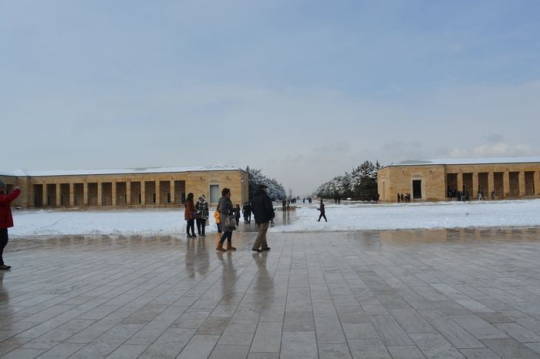
Exchange of Valuable Gifts
Sultan Mahmut I reciprocated the valuable throne received from Nadir Shah with a dispatch of highly valuable gifts. Among these gifts was the renowned “Topkapi Khanjar,” which was sent through the mission led by Kesriyeli Ahmet Pasha.
Sultan’s Decree for Mission
Upon the return of envoy Mustafa Nazif Efendi to Istanbul, he briefed Sultan Mahmut I about the gifts exchanged. In response, Sultan Mahmut I issued a decree assigning Kesriyeli Ahmet Pasha and his mission to Iran, accompanied by exceptionally valuable gifts described as unparalleled Istanbul Private Tours Mevlevi.
Detailed Account by Izzi Suleyman Efendi
Izzi Suleyman Efendi, the private historian to Sultan Mahmut I, provided a detailed account of the incident. He described how a committee was formed to determine the gifts to be sent in exchange for the highly valuable throne. Izzi elaborated on the evaluation process of treasury items, highlighting the meticulous procedures followed.
Evaluation and Documentation
The gifts earmarked for Iran were presented to the Sultan by a committee in the Audience Hall. Under the supervision of this committee, the Chief Jeweller of the Palace, Chief Doorkeeper of the Covered Market, and other officials evaluated the gifts and fixed their prices. A register was maintained for these gifts, and the Chief Doorkeeper of the Treasury was tasked with packaging them and sealing the envelopes under the oversight of the Grand Vizier.
Symbolic Commentary
In addition to documenting the evaluation process, the register book contained a noteworthy commentary emphasizing the symbolic significance of the priceless gifts. It likened these gifts to drops in the sea when compared to the grandeur and authority of the Ottoman State.
Through Izzi Suleyman Efendi’s detailed account, we gain insight into the meticulous procedures and symbolic significance associated with the exchange of valuable gifts during Sultan Mahmut I’s reign.
0 notes
Photo

The Mysterious Bankovsky
The enigmatic figure known as Bankovsky remains shrouded in mystery, his true identity concealed behind a veil of secrecy. Despite efforts to uncover his origins, his real name remains elusive, though it is certain that he was Bulgarian.
Description and Influence
According to Raika, Bankovsky was a striking figure, tall and handsome, with a blonde mustache and piercing blue eyes. His commanding presence and fiery oratory skills captivated the villagers, swaying them with impassioned speeches. Under his influence, they unanimously resolved to revolt upon Servia’s declaration of war, which they anticipated with certainty.
The Need for a Symbol
Recognizing the power of symbolism, the insurgents understood that a flag would galvanize their cause and lend legitimacy to their rebellion. Raika, renowned for her needlework skills, was tasked with embroidering the standard of their uprising. Initially hesitant and aware of the dangers involved, she attempted to dissuade them. However, faced with determination and persuasion from the insurgents, she reluctantly agreed to undertake the task Tour Packages Bulgaria.
Tragic Consequences
To shield her family from potential repercussions, Raika decided to embroider the flag in the house of one of the insurgents, hoping to keep her involvement discreet. Unfortunately, this precaution proved futile. Her father, serving as a priest in the village church, fell victim to the Turkish massacre along with hundreds of others. The flag, now a grim reminder of the rebellion, serves as evidence in ongoing trials.
Symbol of Struggle
The flag, despite its tattered state, bears witness to the villagers’ fervent desire for liberty. Embroidered with a simple yet powerful design—a majestic yellow lion with its paw atop a crescent, symbolizing defiance against Ottoman rule—the flag bears the inscription “Liberty or death” in Bulgarian, embodying the villagers’ unwavering commitment to their cause.
Bankovsky’s influence and the symbolism of the embroidered flag underscore the complex dynamics of the rebellion in Panagurishti. Raika’s involvement, though reluctantly undertaken, tragically intertwines her fate with the unfolding events, highlighting the profound sacrifices made in the pursuit of freedom and independence.
0 notes
Photo

The Mysterious Bankovsky
The enigmatic figure known as Bankovsky remains shrouded in mystery, his true identity concealed behind a veil of secrecy. Despite efforts to uncover his origins, his real name remains elusive, though it is certain that he was Bulgarian.
Description and Influence
According to Raika, Bankovsky was a striking figure, tall and handsome, with a blonde mustache and piercing blue eyes. His commanding presence and fiery oratory skills captivated the villagers, swaying them with impassioned speeches. Under his influence, they unanimously resolved to revolt upon Servia’s declaration of war, which they anticipated with certainty.
The Need for a Symbol
Recognizing the power of symbolism, the insurgents understood that a flag would galvanize their cause and lend legitimacy to their rebellion. Raika, renowned for her needlework skills, was tasked with embroidering the standard of their uprising. Initially hesitant and aware of the dangers involved, she attempted to dissuade them. However, faced with determination and persuasion from the insurgents, she reluctantly agreed to undertake the task Tour Packages Bulgaria.
Tragic Consequences
To shield her family from potential repercussions, Raika decided to embroider the flag in the house of one of the insurgents, hoping to keep her involvement discreet. Unfortunately, this precaution proved futile. Her father, serving as a priest in the village church, fell victim to the Turkish massacre along with hundreds of others. The flag, now a grim reminder of the rebellion, serves as evidence in ongoing trials.
Symbol of Struggle
The flag, despite its tattered state, bears witness to the villagers’ fervent desire for liberty. Embroidered with a simple yet powerful design—a majestic yellow lion with its paw atop a crescent, symbolizing defiance against Ottoman rule—the flag bears the inscription “Liberty or death” in Bulgarian, embodying the villagers’ unwavering commitment to their cause.
Bankovsky’s influence and the symbolism of the embroidered flag underscore the complex dynamics of the rebellion in Panagurishti. Raika’s involvement, though reluctantly undertaken, tragically intertwines her fate with the unfolding events, highlighting the profound sacrifices made in the pursuit of freedom and independence.
0 notes
Photo

Unfathomable Horrors Unveiled
Conflicting Figures
Reports from various sources paint a harrowing picture of devastation and loss in the regions surrounding Philippopolis and Tatar Bazardjik. Mr. Baring’s forthcoming report is expected to document approximately fifty villages razed to the ground and nearly 15,000 lives lost. However, this figure is considered conservative, as French and Russian Consuls, along with railway officials, offer significantly higher estimates, suggesting over a hundred villages decimated and casualties ranging from 25,000 to 40,000. Shockingly, some claim the death toll to be as high as 100,000.
Overwhelming Horror
Once the staggering figure of 15,000 lives lost in just four days is acknowledged, further inquiry seems almost futile. The magnitude of suffering encapsulated in this statistic is unfathomable. Whether the higher estimates are accurate or not, the horror remains undiminished. It’s not the numerical increase that intensifies the horror but the gruesome details that accompany the carnage Turkey Sightseeing.
Heart-Wrenching Testimonies
Accounts from eyewitnesses provide chilling insights into the barbarity unleashed upon innocent civilians. The Greek Consul recounts the horrific fate of 12,000 women and children herded into Tatar Bazardjik, subjected to unspeakable atrocities. Stories emerge of desperate Bulgarian parents resorting to unthinkable acts, such as killing their own families to spare them from the brutality of the Bashi-Bazouks. German officials recount scenes of unimaginable cruelty, including the mutilation of men’s bodies left for animals to devour, the agonizing torment inflicted upon helpless children, and the brutal execution of a priest who witnessed the annihilation of his loved ones before enduring unspeakable torture himself.
Unimaginable Cruelty
The atrocities detailed in these accounts defy comprehension, plunging the mind into a realm of horror too ghastly to contemplate fully. Each narrative serves as a testament to the depths of human depravity and the unfathomable suffering endured by the innocent. As these chilling testimonies emerge, the urgency to address the heinous crimes perpetrated against humanity grows ever more pressing.
0 notes
Photo
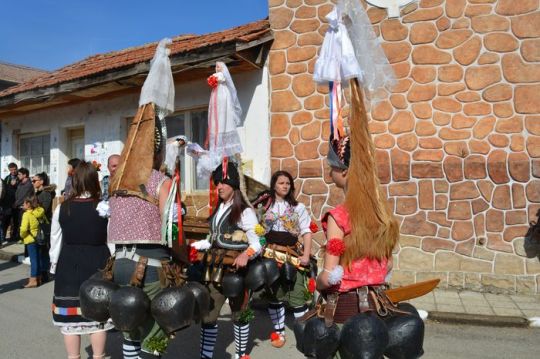
Unfathomable Horrors Unveiled
Conflicting Figures
Reports from various sources paint a harrowing picture of devastation and loss in the regions surrounding Philippopolis and Tatar Bazardjik. Mr. Baring’s forthcoming report is expected to document approximately fifty villages razed to the ground and nearly 15,000 lives lost. However, this figure is considered conservative, as French and Russian Consuls, along with railway officials, offer significantly higher estimates, suggesting over a hundred villages decimated and casualties ranging from 25,000 to 40,000. Shockingly, some claim the death toll to be as high as 100,000.
Overwhelming Horror
Once the staggering figure of 15,000 lives lost in just four days is acknowledged, further inquiry seems almost futile. The magnitude of suffering encapsulated in this statistic is unfathomable. Whether the higher estimates are accurate or not, the horror remains undiminished. It’s not the numerical increase that intensifies the horror but the gruesome details that accompany the carnage Turkey Sightseeing.
Heart-Wrenching Testimonies
Accounts from eyewitnesses provide chilling insights into the barbarity unleashed upon innocent civilians. The Greek Consul recounts the horrific fate of 12,000 women and children herded into Tatar Bazardjik, subjected to unspeakable atrocities. Stories emerge of desperate Bulgarian parents resorting to unthinkable acts, such as killing their own families to spare them from the brutality of the Bashi-Bazouks. German officials recount scenes of unimaginable cruelty, including the mutilation of men’s bodies left for animals to devour, the agonizing torment inflicted upon helpless children, and the brutal execution of a priest who witnessed the annihilation of his loved ones before enduring unspeakable torture himself.
Unimaginable Cruelty
The atrocities detailed in these accounts defy comprehension, plunging the mind into a realm of horror too ghastly to contemplate fully. Each narrative serves as a testament to the depths of human depravity and the unfathomable suffering endured by the innocent. As these chilling testimonies emerge, the urgency to address the heinous crimes perpetrated against humanity grows ever more pressing.
0 notes
Photo

Unfathomable Horrors Unveiled
Conflicting Figures
Reports from various sources paint a harrowing picture of devastation and loss in the regions surrounding Philippopolis and Tatar Bazardjik. Mr. Baring’s forthcoming report is expected to document approximately fifty villages razed to the ground and nearly 15,000 lives lost. However, this figure is considered conservative, as French and Russian Consuls, along with railway officials, offer significantly higher estimates, suggesting over a hundred villages decimated and casualties ranging from 25,000 to 40,000. Shockingly, some claim the death toll to be as high as 100,000.
Overwhelming Horror
Once the staggering figure of 15,000 lives lost in just four days is acknowledged, further inquiry seems almost futile. The magnitude of suffering encapsulated in this statistic is unfathomable. Whether the higher estimates are accurate or not, the horror remains undiminished. It’s not the numerical increase that intensifies the horror but the gruesome details that accompany the carnage Turkey Sightseeing.
Heart-Wrenching Testimonies
Accounts from eyewitnesses provide chilling insights into the barbarity unleashed upon innocent civilians. The Greek Consul recounts the horrific fate of 12,000 women and children herded into Tatar Bazardjik, subjected to unspeakable atrocities. Stories emerge of desperate Bulgarian parents resorting to unthinkable acts, such as killing their own families to spare them from the brutality of the Bashi-Bazouks. German officials recount scenes of unimaginable cruelty, including the mutilation of men’s bodies left for animals to devour, the agonizing torment inflicted upon helpless children, and the brutal execution of a priest who witnessed the annihilation of his loved ones before enduring unspeakable torture himself.
Unimaginable Cruelty
The atrocities detailed in these accounts defy comprehension, plunging the mind into a realm of horror too ghastly to contemplate fully. Each narrative serves as a testament to the depths of human depravity and the unfathomable suffering endured by the innocent. As these chilling testimonies emerge, the urgency to address the heinous crimes perpetrated against humanity grows ever more pressing.
0 notes
Photo
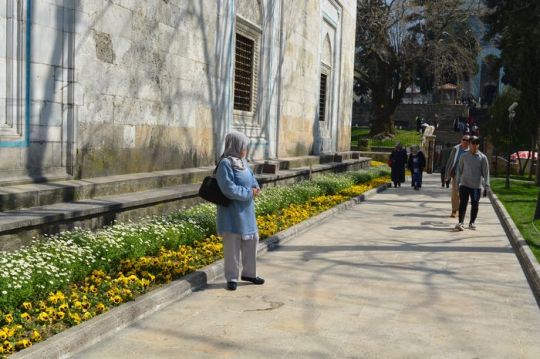
Evolution of the Bulgarian Economy
From Liberation to Soviet Influence
Introduction of Railroads and Trade Specialization (Second Half of 19th Century)
During the late 19th century, Bulgaria saw the construction of its first railroad between Russe and Varna. Urban centers like Gabrovo and Sliven specialized in manufacturing rifles, pistols, and iron tools, while the Rhodope area focused on producing aba cloth.
Economic Primitiveness under Ottoman Rule (Up to Liberation in 1878)
Until the Liberation in 1878, Bulgaria’s economy remained primitive by Western standards, being part of the Ottoman Empire’s economy. It had not been influenced by economic theorists like Adam Smith and David Ricardo. The inherited economy was in transition between a primitive (natural) economy, satisfying the producer’s needs, and a modern trade economy, meeting market demands.
Early Objectives of Post-Liberation Bulgarian Governments
The initial post-Liberation Bulgarian governments aimed for land redistribution, modernizing agricultural techniques, industrialization, and export growth. Progress toward these goals was hindered by the Balkan Wars and World War I. The economic strain of war and reparations after World War I brought Bulgaria close to ruin. Reforms during the Stambolisky government revitalized the economy, followed by stabilization under A. Liapchev’s government (1926-29). However, a totalitarian shift coincided with a new foreign policy orientation in 1934, with increased trade ties with Germany Guided Istanbul Tours.
Soviet Influence and Post-World War II Transformation
After World War II, Soviet occupation led to a radical transformation of the Bulgarian economy in line with the Bolshevik pattern. The land was collectivized, farms mechanized, and all sectors, including industry, trade, and banking, were nationalized.
Overview of Bulgarian Economic Development
This summary provides an overview of Bulgaria’s economic evolution, focusing on four main periods since Liberation. Subsequent discussions will delve into the major economic features of each period.
0 notes
Photo

Evolution of the Bulgarian Economy
From Liberation to Soviet Influence
Introduction of Railroads and Trade Specialization (Second Half of 19th Century)
During the late 19th century, Bulgaria saw the construction of its first railroad between Russe and Varna. Urban centers like Gabrovo and Sliven specialized in manufacturing rifles, pistols, and iron tools, while the Rhodope area focused on producing aba cloth.
Economic Primitiveness under Ottoman Rule (Up to Liberation in 1878)
Until the Liberation in 1878, Bulgaria’s economy remained primitive by Western standards, being part of the Ottoman Empire’s economy. It had not been influenced by economic theorists like Adam Smith and David Ricardo. The inherited economy was in transition between a primitive (natural) economy, satisfying the producer’s needs, and a modern trade economy, meeting market demands.
Early Objectives of Post-Liberation Bulgarian Governments
The initial post-Liberation Bulgarian governments aimed for land redistribution, modernizing agricultural techniques, industrialization, and export growth. Progress toward these goals was hindered by the Balkan Wars and World War I. The economic strain of war and reparations after World War I brought Bulgaria close to ruin. Reforms during the Stambolisky government revitalized the economy, followed by stabilization under A. Liapchev’s government (1926-29). However, a totalitarian shift coincided with a new foreign policy orientation in 1934, with increased trade ties with Germany Guided Istanbul Tours.
Soviet Influence and Post-World War II Transformation
After World War II, Soviet occupation led to a radical transformation of the Bulgarian economy in line with the Bolshevik pattern. The land was collectivized, farms mechanized, and all sectors, including industry, trade, and banking, were nationalized.
Overview of Bulgarian Economic Development
This summary provides an overview of Bulgaria’s economic evolution, focusing on four main periods since Liberation. Subsequent discussions will delve into the major economic features of each period.
0 notes
Photo

Evolution of the Bulgarian Economy
From Liberation to Soviet Influence
Introduction of Railroads and Trade Specialization (Second Half of 19th Century)
During the late 19th century, Bulgaria saw the construction of its first railroad between Russe and Varna. Urban centers like Gabrovo and Sliven specialized in manufacturing rifles, pistols, and iron tools, while the Rhodope area focused on producing aba cloth.
Economic Primitiveness under Ottoman Rule (Up to Liberation in 1878)
Until the Liberation in 1878, Bulgaria’s economy remained primitive by Western standards, being part of the Ottoman Empire’s economy. It had not been influenced by economic theorists like Adam Smith and David Ricardo. The inherited economy was in transition between a primitive (natural) economy, satisfying the producer’s needs, and a modern trade economy, meeting market demands.
Early Objectives of Post-Liberation Bulgarian Governments
The initial post-Liberation Bulgarian governments aimed for land redistribution, modernizing agricultural techniques, industrialization, and export growth. Progress toward these goals was hindered by the Balkan Wars and World War I. The economic strain of war and reparations after World War I brought Bulgaria close to ruin. Reforms during the Stambolisky government revitalized the economy, followed by stabilization under A. Liapchev’s government (1926-29). However, a totalitarian shift coincided with a new foreign policy orientation in 1934, with increased trade ties with Germany Guided Istanbul Tours.
Soviet Influence and Post-World War II Transformation
After World War II, Soviet occupation led to a radical transformation of the Bulgarian economy in line with the Bolshevik pattern. The land was collectivized, farms mechanized, and all sectors, including industry, trade, and banking, were nationalized.
Overview of Bulgarian Economic Development
This summary provides an overview of Bulgaria’s economic evolution, focusing on four main periods since Liberation. Subsequent discussions will delve into the major economic features of each period.
0 notes
Photo
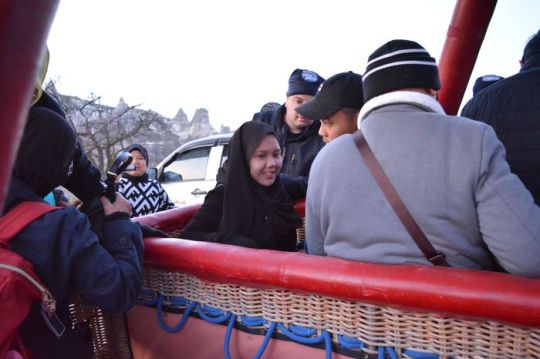
Bulgaria's Path to Democracy 1988-1990
Covert Opposition and the Emergence of the Union of the Democratic Forces (UDF)
Amidst the changing tides of 1988, Bulgaria’s Secret Services strategically worked to suppress any opposition movement that might naturally emerge. Unlike other Eastern European nations with pre-existing oppositions, such as Poland or Czechoslovakia, Bulgaria’s democratic movement, rallying under the slogan “Forty-five years are enough! Time is ours!” was led not by dissidents or anti-communists but by representatives of the totalitarian intellectual elite. The communists responded with a retort, asserting, “Time might be yours, but the money is ours!” This marked the swift transfer of public funds into the hands of newly affiliated businessmen loyal to the Party.
On December 7, 1989, sixteen opposition organizations, including former “non-formals” and reactivated pre-war parties, joined forces to establish the Union of the Democratic Forces (UDF). Driven by the “dissident” Zhelyo Zhelev, a Doctor of Philosophical Sciences, the UDF spearheaded mass rallies and public protests. These actions triggered a transformation in the leadership of existing public and political organizations, prompting most to undergo name changes. Even the Bulgarian Communist party felt the impact of democratization, rebranding itself as the Bulgarian Socialist Party (BSP), with internal factions emerging. Following the “gentle revolution” model in Czechoslovakia, the concept of a “peaceful transition from the totalitarian system to democracy” gained traction City Tours Istanbul.
The Round Table Conference and Democratic Agreements
In January 1990, mirroring the Polish example, the “reformed” communist government initiated a dialogue with the opposition, mainly composed of ex-communists and former functionaries from totalitarian structures. This took the form of a conference known as the “round table.” Intense debates at the round table resulted in agreements on crucial issues such as democratizing state institutions, enacting a law on political parties, restoring private property, guaranteeing human rights, privatizing, and introducing a market economy. As a direct outcome, the Zhivkov-led State Council was dissolved, and Petar Mladenov assumed the role of Bulgaria’s First President. This marked a pivotal step in Bulgaria’s journey toward democracy, guided by the principles of dialogue and compromise.
0 notes
Photo

Bulgaria's Path to Democracy 1988-1990
Covert Opposition and the Emergence of the Union of the Democratic Forces (UDF)
Amidst the changing tides of 1988, Bulgaria’s Secret Services strategically worked to suppress any opposition movement that might naturally emerge. Unlike other Eastern European nations with pre-existing oppositions, such as Poland or Czechoslovakia, Bulgaria’s democratic movement, rallying under the slogan “Forty-five years are enough! Time is ours!” was led not by dissidents or anti-communists but by representatives of the totalitarian intellectual elite. The communists responded with a retort, asserting, “Time might be yours, but the money is ours!” This marked the swift transfer of public funds into the hands of newly affiliated businessmen loyal to the Party.
On December 7, 1989, sixteen opposition organizations, including former “non-formals” and reactivated pre-war parties, joined forces to establish the Union of the Democratic Forces (UDF). Driven by the “dissident” Zhelyo Zhelev, a Doctor of Philosophical Sciences, the UDF spearheaded mass rallies and public protests. These actions triggered a transformation in the leadership of existing public and political organizations, prompting most to undergo name changes. Even the Bulgarian Communist party felt the impact of democratization, rebranding itself as the Bulgarian Socialist Party (BSP), with internal factions emerging. Following the “gentle revolution” model in Czechoslovakia, the concept of a “peaceful transition from the totalitarian system to democracy” gained traction City Tours Istanbul.
The Round Table Conference and Democratic Agreements
In January 1990, mirroring the Polish example, the “reformed” communist government initiated a dialogue with the opposition, mainly composed of ex-communists and former functionaries from totalitarian structures. This took the form of a conference known as the “round table.” Intense debates at the round table resulted in agreements on crucial issues such as democratizing state institutions, enacting a law on political parties, restoring private property, guaranteeing human rights, privatizing, and introducing a market economy. As a direct outcome, the Zhivkov-led State Council was dissolved, and Petar Mladenov assumed the role of Bulgaria’s First President. This marked a pivotal step in Bulgaria’s journey toward democracy, guided by the principles of dialogue and compromise.
0 notes
Photo
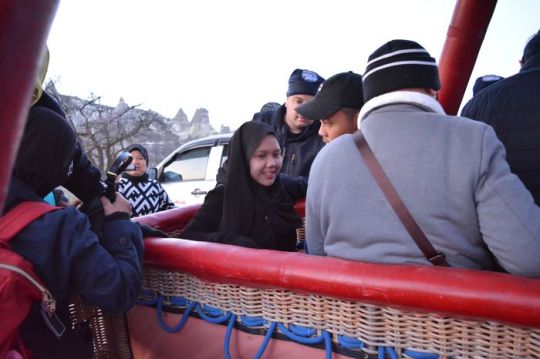
Bulgaria's Path to Democracy 1988-1990
Covert Opposition and the Emergence of the Union of the Democratic Forces (UDF)
Amidst the changing tides of 1988, Bulgaria’s Secret Services strategically worked to suppress any opposition movement that might naturally emerge. Unlike other Eastern European nations with pre-existing oppositions, such as Poland or Czechoslovakia, Bulgaria’s democratic movement, rallying under the slogan “Forty-five years are enough! Time is ours!” was led not by dissidents or anti-communists but by representatives of the totalitarian intellectual elite. The communists responded with a retort, asserting, “Time might be yours, but the money is ours!” This marked the swift transfer of public funds into the hands of newly affiliated businessmen loyal to the Party.
On December 7, 1989, sixteen opposition organizations, including former “non-formals” and reactivated pre-war parties, joined forces to establish the Union of the Democratic Forces (UDF). Driven by the “dissident” Zhelyo Zhelev, a Doctor of Philosophical Sciences, the UDF spearheaded mass rallies and public protests. These actions triggered a transformation in the leadership of existing public and political organizations, prompting most to undergo name changes. Even the Bulgarian Communist party felt the impact of democratization, rebranding itself as the Bulgarian Socialist Party (BSP), with internal factions emerging. Following the “gentle revolution” model in Czechoslovakia, the concept of a “peaceful transition from the totalitarian system to democracy” gained traction City Tours Istanbul.
The Round Table Conference and Democratic Agreements
In January 1990, mirroring the Polish example, the “reformed” communist government initiated a dialogue with the opposition, mainly composed of ex-communists and former functionaries from totalitarian structures. This took the form of a conference known as the “round table.” Intense debates at the round table resulted in agreements on crucial issues such as democratizing state institutions, enacting a law on political parties, restoring private property, guaranteeing human rights, privatizing, and introducing a market economy. As a direct outcome, the Zhivkov-led State Council was dissolved, and Petar Mladenov assumed the role of Bulgaria’s First President. This marked a pivotal step in Bulgaria’s journey toward democracy, guided by the principles of dialogue and compromise.
0 notes
Photo

Perpetual Horrors Endured by Bulgarian Villagers
A Night of Tragedy in Tamboli
This article explores the distressing events that unfolded in Tamboli, shedding light on the tragic killing of a boy under mysterious circumstances. As we delve into the aftermath of this night, tales of violation, maltreatment, and arbitrary arrests surface, revealing the profound impact on the lives of Bulgarian villagers.
A Village in Desolation
From the ruins of Streletia, a village reduced to ashes, cries for justice emerge. Desperate villagers report an alarming reality — not a single day passes without Turkish assailants violating women. Streletia stands as a haunting symbol of the unchecked aggression that has left its people with nothing but the painful memories of their violated community.
A Daily Struggle Against Violence
In Mishka, the narrative continues with heartbreaking consistency. Two men approach, echoing the same story heard in Streletia — a relentless barrage of violence, especially targeting women. The recurring theme underscores the dire state of security, pushing Bulgarian villagers into a daily struggle against the specter of brutality.
A Glimpse into Arbitrary Arrests and Ransoms
Near Tatar Bazardjik, a group of men, bound together in pairs, becomes a poignant tableau of arbitrary arrests. Zaptiehs guard them, escorting them to an uncertain fate in Tatar Bazardjik. Investigations reveal the role of Ali Bey, an obscure authority figure, orchestrating the arrest of well-to-do individuals on dubious charges. Their imprisonment Bulgaria Tour, coupled with various forms of maltreatment, compels them to ransom their freedom at exorbitant rates — a stark illustration of the abuse of power in this tumultuous landscape.
Urgent Plea for Justice and Intervention
As the article concludes, a fervent plea for justice echoes through the testimonies of those who have endured unspeakable horrors. The call for intervention becomes urgent, urging local authorities, international bodies, and humanitarian organizations to address the escalating crisis. The pervasive culture of impunity must be dismantled to protect the vulnerable Bulgarian villagers from further atrocities.
Unmasking the Ongoing Tragedy
In a somber reflection, the article unmasks an ongoing tragedy, where Tamboli becomes emblematic of the larger plight faced by Bulgarian villagers. The narrative illuminates the shadows of fear, violence, and injustice that cloak these communities. It underscores the importance of global awareness and collaborative efforts to dismantle the oppressive structures allowing such atrocities to persist.
A Call to End the Nightmares of Tamboli
In a final call to action, the article urges the international community to rally against the darkness that haunts Tamboli and countless villages like it. It underscores the imperative to stand united against the violations and ensure that Tamboli’s night of tragedy becomes a catalyst for lasting change and justice.
0 notes
Photo
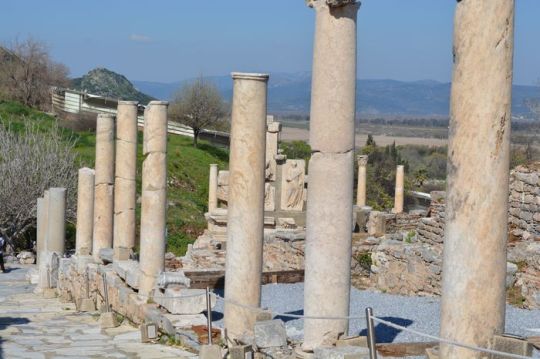
The Verbal Joust
Diplomatic Duels in Otluk-kui
Amidst the ravages of Otluk-kui, a unique diplomatic encounter unfolded, revealing the power dynamics and the verbal sparring between Mr. Schuyler and the Mudir. This episode, characterized by strategic exchanges and veiled threats, sheds light on the delicate dance of diplomacy in the face of atrocity.
Diplomatic Parry and Riposte Mudir’s Justification and Consul’s Retort
The stage was set for a verbal duel when the Mudir responded callously, asserting that the misery befallen upon the people of Otluk-kui was a consequence of their own actions. This declaration, laden with blame, presented an opportunity for Mr. Schuyler to launch a counteroffensive. Using Antonio as the messenger, Mr. Schuyler conveyed the Consul’s displeasure at the Mudir’s attribution of misery to the victims.
The Consul’s calculated response exhibited a diplomatic finesse that both condemned the Mudir’s callousness and appealed to a higher authority—the Sultan. By invoking the sublime goodness of the Sultan, Mr. Schuyler subtly signaled that the blame lay not with the suffering people but with the unjust actions perpetrated against them. The implicit warning about the Sultan turning attention to errant Mudirs added a layer of caution, creating a palpable tension in the diplomatic discourse.
Diplomatic Stratagem Utilizing Verbal Tactics for Change
The verbal exchange, orchestrated through Antonio, unfolded as a carefully choreographed dance of words. The Consul, through this indirect approach, managed to convey disapproval and an expectation of change without directly confronting the Mudir. By strategically employing compliments, veiled threats, and subtle admonitions, Mr. Schuyler attempted to shape the narrative surrounding Otluk-kui and its afflicted residents.
The Mudir, having endured this prolonged diplomatic joust, was left in a state of unease and awe. The encounter concluded with an announcement that the interview had concluded, leaving the Mudir to ponder the implications of this nuanced exchange. The diplomatic maneuver revealed that beneath the surface of formalities and polite discourse Travel Bulgaria, a silent struggle for justice and accountability was unfolding.
In the aftermath of this verbal joust, the fate of Otluk-kui remained uncertain. The diplomatic chess game continued, with each move carefully calculated to expose the truth, bring relief to the suffering, and hold those responsible accountable. The echoes of this exchange lingered, a testament to the intricate web of diplomatic maneuvers undertaken in the pursuit of justice in Otluk-kui.
0 notes
Photo

The Verbal Joust
Diplomatic Duels in Otluk-kui
Amidst the ravages of Otluk-kui, a unique diplomatic encounter unfolded, revealing the power dynamics and the verbal sparring between Mr. Schuyler and the Mudir. This episode, characterized by strategic exchanges and veiled threats, sheds light on the delicate dance of diplomacy in the face of atrocity.
Diplomatic Parry and Riposte Mudir’s Justification and Consul’s Retort
The stage was set for a verbal duel when the Mudir responded callously, asserting that the misery befallen upon the people of Otluk-kui was a consequence of their own actions. This declaration, laden with blame, presented an opportunity for Mr. Schuyler to launch a counteroffensive. Using Antonio as the messenger, Mr. Schuyler conveyed the Consul’s displeasure at the Mudir’s attribution of misery to the victims.
The Consul’s calculated response exhibited a diplomatic finesse that both condemned the Mudir’s callousness and appealed to a higher authority—the Sultan. By invoking the sublime goodness of the Sultan, Mr. Schuyler subtly signaled that the blame lay not with the suffering people but with the unjust actions perpetrated against them. The implicit warning about the Sultan turning attention to errant Mudirs added a layer of caution, creating a palpable tension in the diplomatic discourse.
Diplomatic Stratagem Utilizing Verbal Tactics for Change
The verbal exchange, orchestrated through Antonio, unfolded as a carefully choreographed dance of words. The Consul, through this indirect approach, managed to convey disapproval and an expectation of change without directly confronting the Mudir. By strategically employing compliments, veiled threats, and subtle admonitions, Mr. Schuyler attempted to shape the narrative surrounding Otluk-kui and its afflicted residents.
The Mudir, having endured this prolonged diplomatic joust, was left in a state of unease and awe. The encounter concluded with an announcement that the interview had concluded, leaving the Mudir to ponder the implications of this nuanced exchange. The diplomatic maneuver revealed that beneath the surface of formalities and polite discourse Travel Bulgaria, a silent struggle for justice and accountability was unfolding.
In the aftermath of this verbal joust, the fate of Otluk-kui remained uncertain. The diplomatic chess game continued, with each move carefully calculated to expose the truth, bring relief to the suffering, and hold those responsible accountable. The echoes of this exchange lingered, a testament to the intricate web of diplomatic maneuvers undertaken in the pursuit of justice in Otluk-kui.
0 notes
Photo
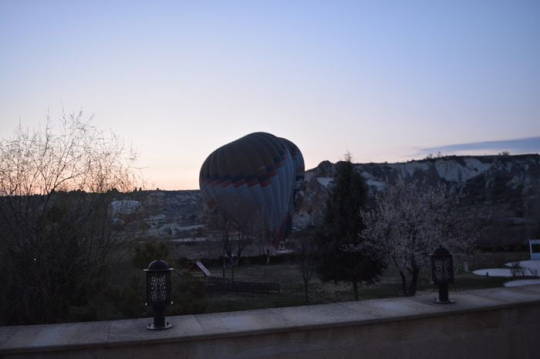
An angry manner
They barked at us in an angry manner, and then ran off into the adjoining fields. I observed nothing peculiar as we mounted, until my horse stumbled. When looking down I perceived he had stepped on a human skull partly hid among the grass. It was quite dry and hard, and might, to all appearances, have been there for two or three years, so well had the dogs done their work. A few steps further there was another, and beside it part of a skeleton, likewise white and dry.
As we ascended, bones, skeletons, and skulls became more frequent, but here they had not been picked so clean, for there were fragments of half-dry, half-putrid flesh still clinging to them. At last we came to a kind of little plateau or shelf on the hillside, where the ground was nearly level, with the exception of a little indentation where the head of a hollow broke through. We rode towards this, with the intention of crossing it, but all suddenly drew rein with an exclamation of horror, for right before us, almost beneath our horses’ feet, was a sight that made us shudder Guided Istanbul Tours.
Human body
It was a heap of skulls, intermingled with bones from all parts of the human body, skeletons, nearly entire, rotting, clothing, human hair, and putrid flesh lying there in one foul heap, around which the grass was growing luxuriantly. It emitted a sickening odour, like that of a dead horse, and it was here the dogs had been seeking a hasty repast when our untimely approach interrupted them.
In the midst of this heap I could distinguish one slight skeleton form still enclosed in a chemise, the skull wrapped about with a coloured handkerchief, and the bony ankles encased in the embroidered footless stockings worn by the Bulgarian girls. We looked about us.
The ground was strewed with bones in every direction, where the dogs had carried them off to gnaw them at their leisure. At the distance of a hundred yards beneath us lay the town. As seen from our stand-point, it reminded one somewhat of the ruins of Herculaneum or Pompeii.
0 notes
Photo

An angry manner
They barked at us in an angry manner, and then ran off into the adjoining fields. I observed nothing peculiar as we mounted, until my horse stumbled. When looking down I perceived he had stepped on a human skull partly hid among the grass. It was quite dry and hard, and might, to all appearances, have been there for two or three years, so well had the dogs done their work. A few steps further there was another, and beside it part of a skeleton, likewise white and dry.
As we ascended, bones, skeletons, and skulls became more frequent, but here they had not been picked so clean, for there were fragments of half-dry, half-putrid flesh still clinging to them. At last we came to a kind of little plateau or shelf on the hillside, where the ground was nearly level, with the exception of a little indentation where the head of a hollow broke through. We rode towards this, with the intention of crossing it, but all suddenly drew rein with an exclamation of horror, for right before us, almost beneath our horses’ feet, was a sight that made us shudder Guided Istanbul Tours.
Human body
It was a heap of skulls, intermingled with bones from all parts of the human body, skeletons, nearly entire, rotting, clothing, human hair, and putrid flesh lying there in one foul heap, around which the grass was growing luxuriantly. It emitted a sickening odour, like that of a dead horse, and it was here the dogs had been seeking a hasty repast when our untimely approach interrupted them.
In the midst of this heap I could distinguish one slight skeleton form still enclosed in a chemise, the skull wrapped about with a coloured handkerchief, and the bony ankles encased in the embroidered footless stockings worn by the Bulgarian girls. We looked about us.
The ground was strewed with bones in every direction, where the dogs had carried them off to gnaw them at their leisure. At the distance of a hundred yards beneath us lay the town. As seen from our stand-point, it reminded one somewhat of the ruins of Herculaneum or Pompeii.
0 notes